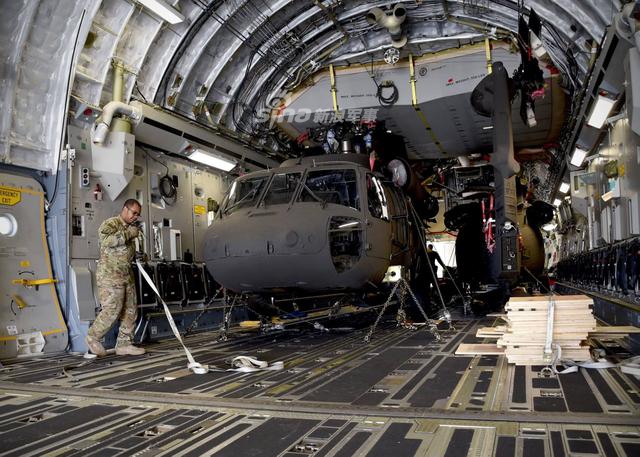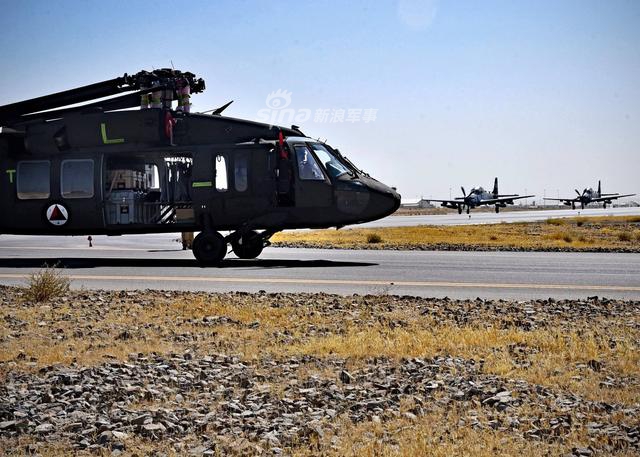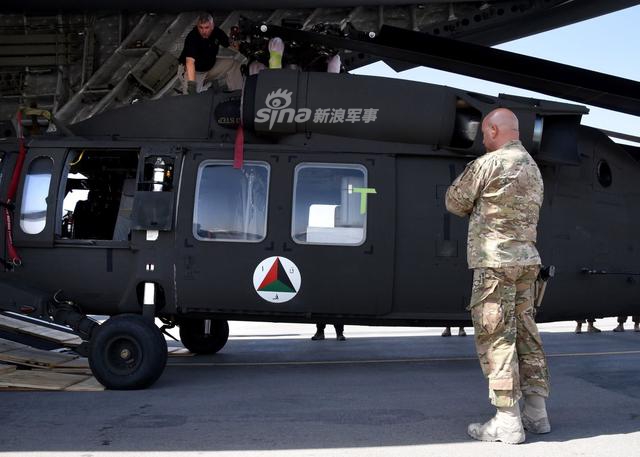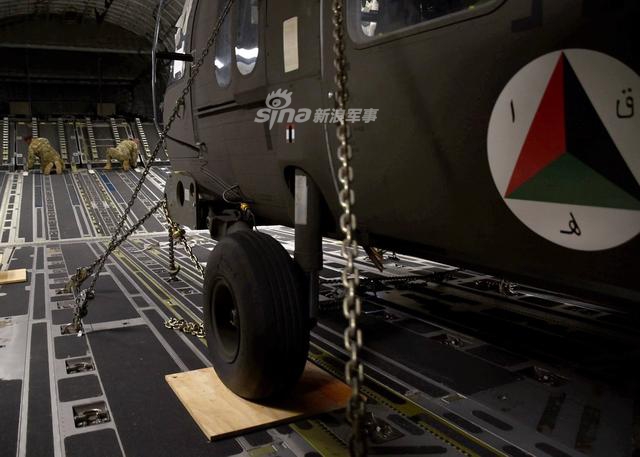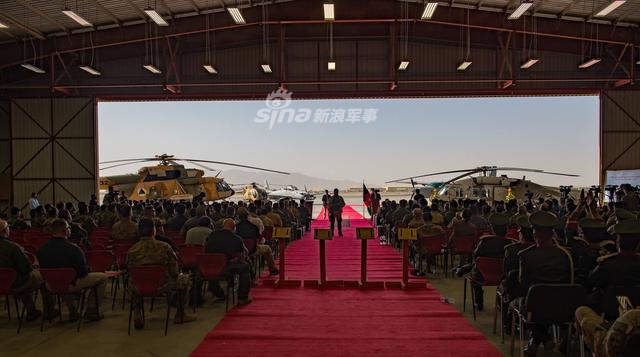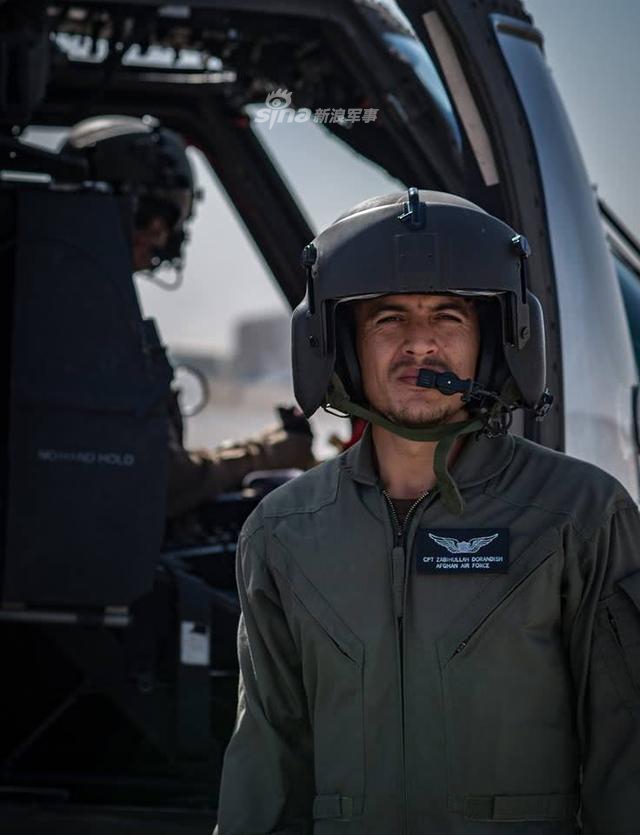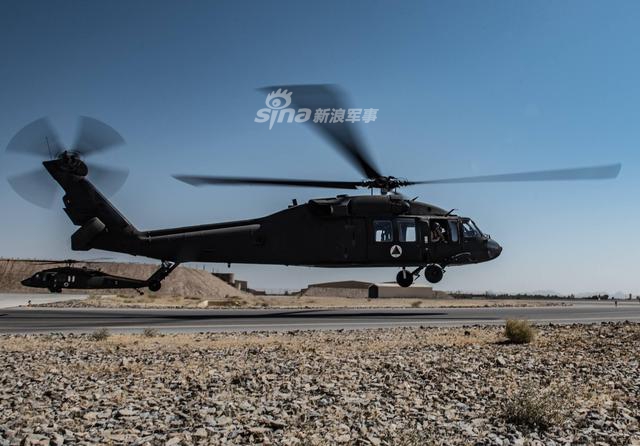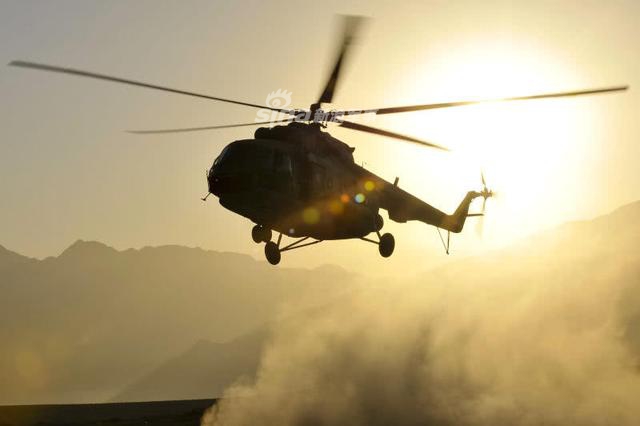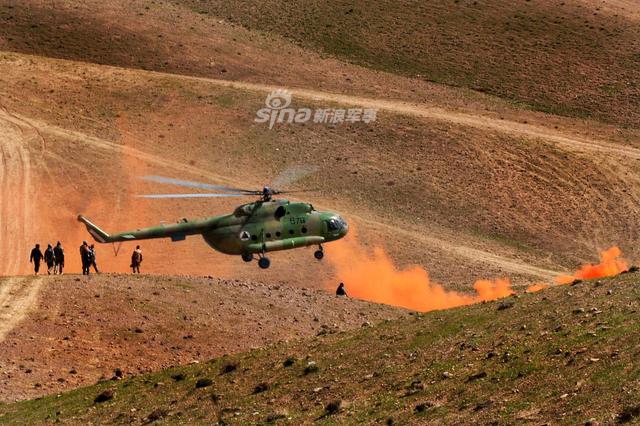https://www.rt.com/news/429992-afghanistan-us-helicopter-problems/
Pentagon finds Afghanistan’s ‘new’ Black Hawk helicopters inferior to Russian Mi-17s
Published time: 16 Jun, 2018 21:45
Get short URL
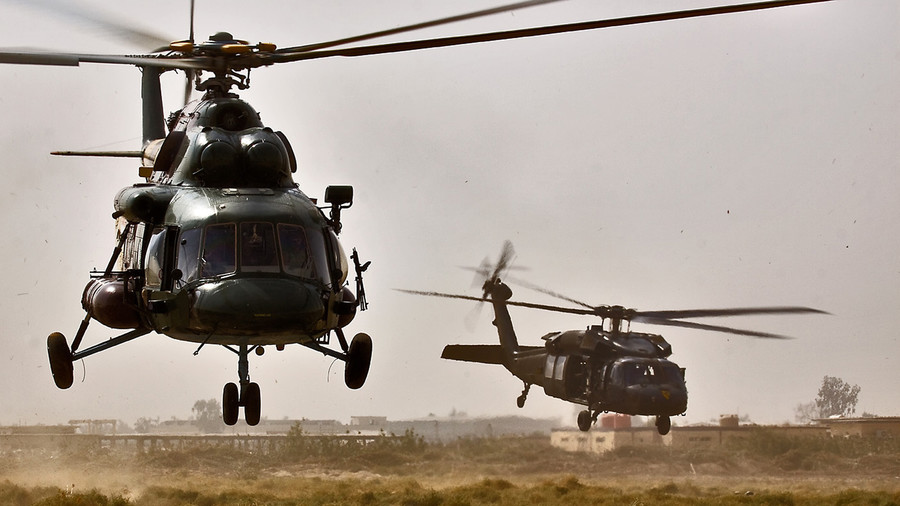
FILE PHOTO: An Mi-17 and a UH-60 Black Hawk helicopters in Iraq © US Army / Sgt. Travis Zielinski / Reuters
US plans to replace Afghan Mi-17s with Black Hawks have met new “challenges,” as the Russian military choppers are superior, according to a Pentagon report. On the bright side, “private contractors” will be busy maintaining them.
The revelation has been made by the Lead Inspector General in a quarterly report on Operation Freedom's Sentinel – the current code name for the16-year-plus deployment of US troops in Afghanistan.
The decision to supply Kabul with some 160 refurbished UH-60A Black Hawk helicopters was expected to significantly boost the capabilities of the Afghan Air Force and would contribute to breaking or fully break the “stalemate” in the country.
Read more
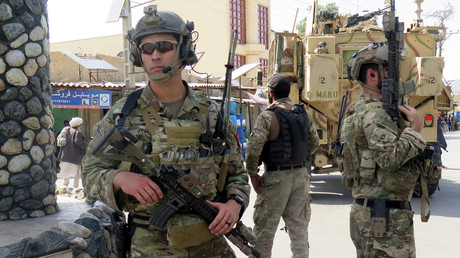 Afghans question US worth in Taliban fight as Pentagon watchdog admits ‘lack of progress’
Afghans question US worth in Taliban fight as Pentagon watchdog admits ‘lack of progress’
The Black Hawks are set to replace the Afghan fleet of Russian Mi-17 transport-assault helicopters.
The Pentagon, however, has warned about a lack of “necessary technical skills” among Afghani trainee pilots, as well as other obstacles, such as lack of proper “English language training.”
The new report, by the top military watchdog, has uncovered even more flaws in the plan to supply Afghanistan with UH-60As.
“The transition presents several challenges that have yet to be fully addressed. Black Hawks do not have the lift capacity of Mi-17s. They are unable to accommodate some of the larger cargo items the Mi-17s can carry, and in general, it takes almost two Black Hawks to carry the load of a single Mi-17,” the report reads.
Moreover, the Black Hawks “cannot fly at high elevations and, as such, cannot operate in remote regions of Afghanistan where Mi-17s operate.” Russian-made helicopters will therefore continue to “play a ‘crucial role’ in the near term fighting season.” “In the future, as Mi-17s phase out of service, the aforementioned challenges will become more pronounced,” the report warned.
Read more
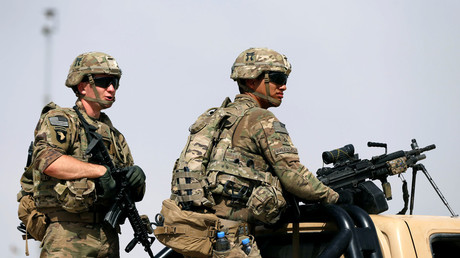 Kabul can't support army without US money more than 6 months – Afghan president
Kabul can't support army without US money more than 6 months – Afghan president
It remains unclear how exactly these “challenges” emerged unexpectedly, since both the Mi-17 and UH-60A helicopters date back to the 1970s and their capabilities should have been well known to the US military. Indeed, military analysts had repeatedly warned against the UH-60A program, citing all the aforementioned concerns.
Such “surprise” concerns might actually originate from political –and commercial– motivations, the report hints.
“According to DoD, that transition was driven largely by the requirement for additional rotary wing lift and aerial fires capability, particularly given attrition of the Mi-17 fleet, and Congressional direction to transition to US-made rotary wing aircraft rather than spending any more from the [Afghan Security Forces Fund] on buying helicopters from Russia,” the document states.
Apart from making use of the refurbished UH-60As, the transition would also keep the “private contractors” busy “in the near to mid-term,” as the local forces lack the required experience to maintain the US-made helicopters. The Mi-17, by comparison, gets roughly 80 percent of its maintenance from Afghan specialists, while relying on “contractor logistics support” for the remaining 20 percent.
Like this story? Share it with a friend!
https://en.wikipedia.org/wiki/Sikorsky_UH-60_Black_Hawk
Specifications (UH-60L)

Data from Encyclopedia of Modern Warplanes,[160] International Directory,[161] Black Hawk[162]
General characteristics
https://en.wikipedia.org/wiki/Mil_Mi-17

Macedonian Air Force Mi-17 performing a very tight low-level right turn
Specifications (Mil-17-1A2)
Data from [128]
General characteristics
Pentagon finds Afghanistan’s ‘new’ Black Hawk helicopters inferior to Russian Mi-17s
Published time: 16 Jun, 2018 21:45
Get short URL

FILE PHOTO: An Mi-17 and a UH-60 Black Hawk helicopters in Iraq © US Army / Sgt. Travis Zielinski / Reuters
US plans to replace Afghan Mi-17s with Black Hawks have met new “challenges,” as the Russian military choppers are superior, according to a Pentagon report. On the bright side, “private contractors” will be busy maintaining them.
The revelation has been made by the Lead Inspector General in a quarterly report on Operation Freedom's Sentinel – the current code name for the16-year-plus deployment of US troops in Afghanistan.
The decision to supply Kabul with some 160 refurbished UH-60A Black Hawk helicopters was expected to significantly boost the capabilities of the Afghan Air Force and would contribute to breaking or fully break the “stalemate” in the country.
Read more
 Afghans question US worth in Taliban fight as Pentagon watchdog admits ‘lack of progress’
Afghans question US worth in Taliban fight as Pentagon watchdog admits ‘lack of progress’ The Black Hawks are set to replace the Afghan fleet of Russian Mi-17 transport-assault helicopters.
The Pentagon, however, has warned about a lack of “necessary technical skills” among Afghani trainee pilots, as well as other obstacles, such as lack of proper “English language training.”
The new report, by the top military watchdog, has uncovered even more flaws in the plan to supply Afghanistan with UH-60As.
“The transition presents several challenges that have yet to be fully addressed. Black Hawks do not have the lift capacity of Mi-17s. They are unable to accommodate some of the larger cargo items the Mi-17s can carry, and in general, it takes almost two Black Hawks to carry the load of a single Mi-17,” the report reads.
Moreover, the Black Hawks “cannot fly at high elevations and, as such, cannot operate in remote regions of Afghanistan where Mi-17s operate.” Russian-made helicopters will therefore continue to “play a ‘crucial role’ in the near term fighting season.” “In the future, as Mi-17s phase out of service, the aforementioned challenges will become more pronounced,” the report warned.
Read more
 Kabul can't support army without US money more than 6 months – Afghan president
Kabul can't support army without US money more than 6 months – Afghan president It remains unclear how exactly these “challenges” emerged unexpectedly, since both the Mi-17 and UH-60A helicopters date back to the 1970s and their capabilities should have been well known to the US military. Indeed, military analysts had repeatedly warned against the UH-60A program, citing all the aforementioned concerns.
Such “surprise” concerns might actually originate from political –and commercial– motivations, the report hints.
“According to DoD, that transition was driven largely by the requirement for additional rotary wing lift and aerial fires capability, particularly given attrition of the Mi-17 fleet, and Congressional direction to transition to US-made rotary wing aircraft rather than spending any more from the [Afghan Security Forces Fund] on buying helicopters from Russia,” the document states.
Apart from making use of the refurbished UH-60As, the transition would also keep the “private contractors” busy “in the near to mid-term,” as the local forces lack the required experience to maintain the US-made helicopters. The Mi-17, by comparison, gets roughly 80 percent of its maintenance from Afghan specialists, while relying on “contractor logistics support” for the remaining 20 percent.
Like this story? Share it with a friend!
https://en.wikipedia.org/wiki/Sikorsky_UH-60_Black_Hawk
Specifications (UH-60L)

Data from Encyclopedia of Modern Warplanes,[160] International Directory,[161] Black Hawk[162]
General characteristics
- Crew: 2 pilots (flight crew) with 2 crew chiefs/gunners
- Capacity: 2,640 lb (1,200 kg) of cargo internally, including 11 troops or 6 stretchers, or 9,000 lb (4,100 kg) (UH-60L) of cargo externally
- Length: 64 ft 10 in (19.76 m)
- Fuselage length: 50 ft 1 in (15.27 m)
- Fuselage width: 7 ft 9 in (2.36 m))
- Rotor diameter: 53 ft 8 in (16.36 m)
- Height: 16 ft 10 in (5.13 m)
- Disc area: 2,260 ft² (210 m²)
- Empty weight: 10,624 lb (4,819 kg)
- Max. takeoff weight: 23,500 lb (10,660 kg)
- Rotational speed: Engine 20,900 RPM, main rotor 258 RPM (gear ratio 81:1)[163]
- Powerplant: 2 × General Electric T700-GE-701C turboshaft, 1,890 hp (1,410 kW) each
- Never exceed speed: 193 knots (222 mph; 357 km/h)
- Maximum speed: 159 kn (183 mph; 294 km/h)
- Cruise speed: 150 kn (170 mph; 280 km/h)
- Combat radius: 368 mi (320 nmi; 592 km)
- Ferry range: 1,380 mi[160] (1,200 nmi; 2,220 km) with ESSS stub wings and external tanks[162]
- Service ceiling: 19,000 ft (5,790 m)
- Rate of climb: 1,315 ft/min[164] (4.5 m/s)
- Disc loading: 7.19 lb/ft² (35.4 kg/m²)
- Power/mass: 0.192 hp/lb (158 W/kg)
https://en.wikipedia.org/wiki/Mil_Mi-17

Macedonian Air Force Mi-17 performing a very tight low-level right turn
Specifications (Mil-17-1A2)
Data from [128]
General characteristics
- Crew: Three: two pilots and one engineer
- Capacity: 24 troops or 12 stretchers or 4,000 kg (8,820 lb) cargo internally /5,000 kg (11,023 lb) externally slung.
- Length: 18.465 m (60 ft 7 in)
- Rotor diameter: 21.25 m (69 ft 10½ in)
- Height: 4.76 m (15 ft 7¼ in)
- Disc area: 356 m² (3,834 ft²)
- Empty weight: 7,489 kg (16,510 lb)
- Loaded weight: 11,100 kg (24,470 lb)
- Max. takeoff weight: 13,000 kg (28,660 lb)
- Powerplant: 2 × Klimov VK-2500PS-03 turboshaft, 2,400 hp () each
- Maximum speed: 280 km/h (151 knots, 174 mph)
- Cruise speed: 260 km/h
- Range: 800 km (431 nmi, 497 mi) (with main fuel tanks)
- Service ceiling: 6,000 m (19,690 ft)
- Rate of climb: 8 m/s[citation needed] (1,575 ft/min)
- up to 1,500 kg (3,300 lb) of disposable stores on six hardpoints, including bombs, rockets, and gunpods.

